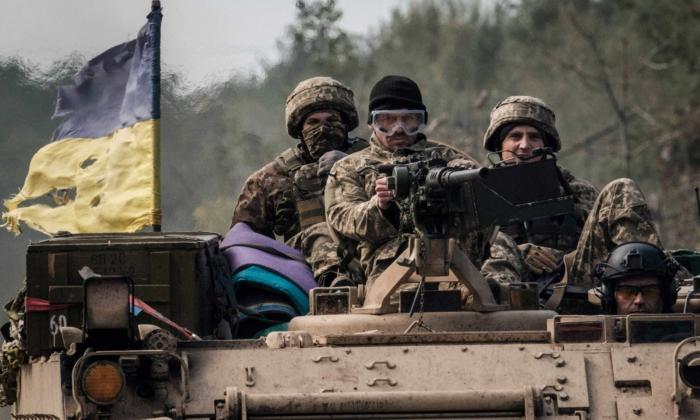Ukraine claims that its forces have retaken the fortified town of Robotyne in the Russian-occupied east. The victory could signal a shift in the embattled nation’s plodding counteroffensive.
Ukrainian leadership said its troops liberated the village, located in the Zaporizhzhia region, on Aug. 28.
“Robotyne has been liberated,” Ukrainian Deputy Defense Minister Hanna Maliar said during a televised address. “Our forces are advancing southeast of Robotyne.”
The Ukrainian military stated last week that its forces had raised the national flag in Robotyne but were still conducting operations to eliminate remaining Russian forces in the area.
If true, the feat signals that Ukraine’s flagging counteroffensive may begin picking up steam soon.
A Strategic Coup for Ukraine
Robotyne sits on the road between the frontline town of Orikhiv, Ukraine, and the Russian-occupied rail hub of Tokmak. Its strategic placement could give Ukraine further ability to attack key Russian supply lines.Russia claimed in September to have annexed the region, along with those of Donetsk, Luhansk, and Kherson. Moscow’s troops have failed to fully control the regions, however, and its defenses throughout much of occupied eastern Ukraine appear to be faltering as it moves to consolidate forces around key holding points.
If Ukrainian forces can push from Robotyne into Tokmak, roughly 18 miles south, they could effectively split the Russian forces occupying the region north of the Sea of Azov, cutting off supplies to those located in Kherson and western Zaporizhzhia.
To that end, Ms. Maliar said Ukrainian forces are now operating both south and northeast of Robotyne, where she described fighting in the region as “very hot.”
Fighting Still Intense
Ukrainian forces also continue to fight Russian troops in eastern Ukraine, where progress has been slower than previously hoped for.Ms. Maliar said Ukrainian forces successfully recaptured a little more than a third of a square mile of the war-torn city of Bakhmut over the past week and prevented any Russian advances there.
White House national security adviser Jake Sullivan told the press on Aug. 22 that Kyiv’s forces continue to make methodical gains and are pushing Russian forces back one step at a time.
“Ukrainians are operating according to their tactics and their timetable, making progress according to the strategic and operational decisions of their commanders and their leadership, and we’ll continue to support that,” Mr. Sullivan said.
“As I noted before, we continue to support Ukraine in its effort to take territory as part of this counteroffensive, and we are seeing it continue to take territory on a methodical, systematic basis.”
U.S. military leadership previously acknowledged the hardships faced by Kyiv.
“Real war is not predictable,” he said. “It is filled with fear and fog and friction. Real war is brutal.
“That’s the difference between war on paper and real war.”
Gen. Milley acknowledged that much of the slowdown is because of Russia’s expansive minefields throughout eastern Ukraine, which continue to kill Ukrainian service members and destroy vehicles.
Those minefields are often accompanied by Russian hunter-killer teams, which frequently ambush Ukrainian forces that seek to clear a path through the minefields, he noted.
Still, there remains much blood to be spilled in the months to come, according to Gen. Milley.
“They’ve had a lot of time to prepare,” he said of the Russian fortifications.
“[The Ukrainians are] working their way through it. It is far from a failure ... there’s a lot of fighting left to go.”







